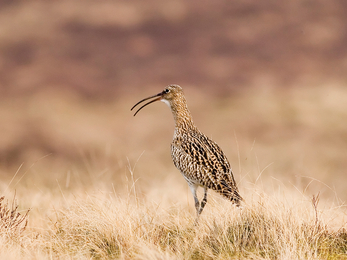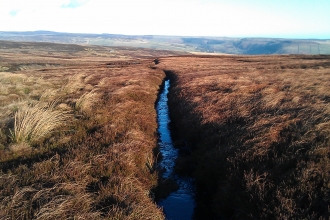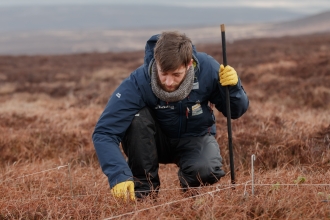How do peatlands form?
Peatlands form over thousands of years. They are the accumulation of layers and layers of slowly decomposing plants, which over time turns into a sort of organic soil which we call peat. It takes about 1000 years to form 1m deep of peat. Peat can only form in very wet conditions, which causes the plants to rot very slowly.
A large percentage of the plants which form peat are called sphagnum - a group of around 380 species of mosses worldwide.
Because the plants don't properly biodegrade when they die, they don't release their carbon (part of the structure of all living things) to the atmosphere. It is trapped within the land and only released if the peatland is disturbed.
There are three main types of peatland. Find out more about them:
What do healthy peatlands look like?
- Healthy peatlands are wet environments. Sphagnum can hold 20 times it's weight in water!
- They're also fully saturated, meaning they can't absorb any more water. Sometimes it is claimed that a peatland will help to 'absorb' rainfall, preventing it from reaching rivers - this is not true. However, the plants and mosses that thrive in the wet habitat help to slow the flow of water, reducing the risk of flash flooding flooding downriver.
- There are lots of plants, mosses and animals which love the wet environment provided by peatlands. On a healthy peatland, we'd hope to see a variety of these species, including round-leaved sundew, cotton grass, curlew, golden plover and field voles.
How does our work help the peatland to become healthy again?
Our restoration work involves blocking the drainage channels that were dug into the peatland during the 1950s and 1960s. This prevents water running off the peatland and allows the habitat to become resaturated again.
We also plant a variety of sphagnum mosses to help revegetate bare areas of peat. These will form peat in the future, as well as helping to slow the flow off water from the peatland when it's saturated, and filter our water.






